-
 Bitcoin
Bitcoin $82,885.3260
7.82% -
 Ethereum
Ethereum $1,664.7407
13.01% -
 Tether USDt
Tether USDt $0.9998
0.06% -
 XRP
XRP $2.0661
13.96% -
 BNB
BNB $582.1066
4.53% -
 Solana
Solana $118.5136
11.94% -
 USDC
USDC $1.0000
-0.01% -
 Dogecoin
Dogecoin $0.1617
13.03% -
 TRON
TRON $0.2376
2.98% -
 Cardano
Cardano $0.6386
13.85% -
 UNUS SED LEO
UNUS SED LEO $9.3562
3.91% -
 Chainlink
Chainlink $12.6904
15.79% -
 Toncoin
Toncoin $3.2081
6.90% -
 Avalanche
Avalanche $18.5421
15.29% -
 Stellar
Stellar $0.2419
8.33% -
 Sui
Sui $2.2585
14.96% -
 Hedera
Hedera $0.1702
13.94% -
 Shiba Inu
Shiba Inu $0.0...01202
12.99% -
 MANTRA
MANTRA $6.6226
6.82% -
 Bitcoin Cash
Bitcoin Cash $305.1008
12.57% -
 Litecoin
Litecoin $76.9815
10.64% -
 Polkadot
Polkadot $3.7073
8.65% -
 Dai
Dai $1.0002
0.00% -
 Bitget Token
Bitget Token $4.2387
4.73% -
 Ethena USDe
Ethena USDe $0.9990
0.02% -
 Hyperliquid
Hyperliquid $13.9516
24.16% -
 Pi
Pi $0.6078
6.54% -
 Monero
Monero $204.8144
2.32% -
 Uniswap
Uniswap $5.4402
13.27% -
 OKB
OKB $53.4805
4.53%
How do I view smart contract interaction records in Trust Wallet?
Trust Wallet doesn't show all smart contract interactions directly, but you can access this info via blockchain explorers like Etherscan for Ethereum or BscScan for BSC.
Apr 04, 2025 at 05:08 am
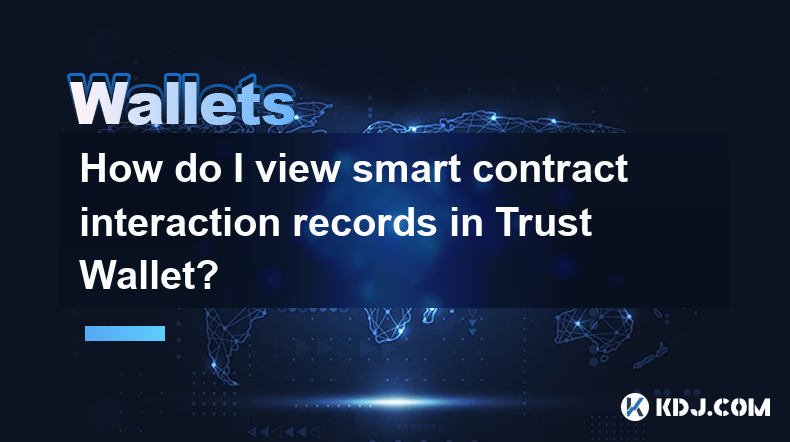
Trust Wallet, a popular mobile cryptocurrency wallet, doesn't directly display a comprehensive history of all smart contract interactions within its interface in the same way a dedicated blockchain explorer might. However, you can still access this information through several methods, depending on the specific blockchain and smart contract you're interested in.
Accessing Smart Contract Interaction Records
The process of viewing smart contract interaction records depends heavily on the blockchain your smart contract resides on. Trust Wallet supports a wide range of blockchains, each with its own explorer. Therefore, there isn't a single, universal method.
Using a Blockchain Explorer: This is the most reliable method. Every major blockchain (Ethereum, Binance Smart Chain, Polygon, etc.) has its own dedicated explorer. These explorers provide detailed transaction history for every address on the network. You'll need the address of the smart contract you interacted with and potentially your own wallet address. Simply paste your address into the explorer's search bar to view transactions. Many explorers allow filtering by token or contract address.
Checking Transaction Details Within Trust Wallet: While Trust Wallet doesn't show a detailed smart contract interaction log, it does display basic transaction information. When you view a transaction within your Trust Wallet history, you might find a link to the blockchain explorer associated with that transaction. Clicking this link will take you to the explorer, where you can see the full details of the interaction, including gas fees and smart contract calls.
Understanding Transaction Hash: Each transaction on a blockchain is uniquely identified by a transaction hash (a long alphanumeric string). You can find this hash within your Trust Wallet transaction history. This hash is crucial for finding the details of your interaction on the relevant blockchain explorer. Use this hash to search directly on the explorer for a detailed record of the transaction.
Identifying Relevant Smart Contract Address: Before searching, you need to know the address of the specific smart contract you interacted with. This address is often provided by the decentralized application (dApp) you used. If you can't find it, looking at the transaction details within Trust Wallet might reveal the contract address involved in the transaction.
Different Blockchains, Different Explorers
Remember that each blockchain uses a different explorer. Here are some examples:
- Ethereum: Etherscan.io is the most popular explorer for Ethereum.
- Binance Smart Chain: BscScan.com is the equivalent for Binance Smart Chain.
- Polygon: Polygonscan.com is the dedicated explorer for the Polygon network.
Using the correct explorer is vital for finding your transaction information. Using the wrong explorer will yield no results. Always verify the blockchain your smart contract is on before searching. The network name is usually clearly displayed within the dApp or in your Trust Wallet transaction details.
Interpreting the Explorer Data
Once you've accessed the blockchain explorer, you'll see a detailed breakdown of the transaction. This information typically includes:
- Transaction Hash: The unique identifier for the transaction.
- Block Number: The block in which the transaction was included.
- Timestamp: The time the transaction was processed.
- From Address: Your wallet address.
- To Address: The smart contract address.
- Gas Used: The amount of gas consumed during the transaction.
- Gas Price: The price paid per unit of gas.
- Value: The amount of cryptocurrency transferred (if any).
- Input Data: This section contains the specific function called within the smart contract and any arguments passed to it. This is often the most important part for understanding the exact interaction. It might be represented in hexadecimal code, requiring some technical knowledge to interpret fully.
Troubleshooting and Common Issues
Transaction not showing up: If you can't find your transaction, ensure you're using the correct blockchain explorer and that enough time has passed for the transaction to be included in a block. Network congestion can cause delays.
Difficulty interpreting input data: The input data section can be complex. If you lack the technical skills to understand it, consider seeking assistance from the dApp's community or developers.
Incorrect smart contract address: Double-check the smart contract address you're using. Even a slight error will prevent you from finding the transaction.
Privacy Concerns: Remember that all transactions on a public blockchain are publicly visible. While your personal information isn't directly linked, your transaction history is accessible to anyone.
Frequently Asked Questions
Q: Can I view all my smart contract interactions in one place within Trust Wallet?
A: No, Trust Wallet doesn't provide a consolidated view of all smart contract interactions. You need to use blockchain explorers for a complete record.
Q: What if I don't know the smart contract address?
A: Check your Trust Wallet transaction history. The transaction details might include the contract address. Alternatively, the dApp you used should provide this information.
Q: My transaction isn't appearing on the explorer. What should I do?
A: Wait some time. It might take time for the transaction to be confirmed and added to a block. Check the transaction status within Trust Wallet. If it remains pending for an extended period, contact the dApp support or the relevant blockchain support team.
Q: The input data on the explorer is confusing. How can I understand it?
A: The input data is often encoded. You may need to consult the smart contract's documentation or seek help from developers or the dApp community to decipher it. It often represents the function call and arguments.
Q: Is it safe to use blockchain explorers?
A: Reputable blockchain explorers are generally safe. However, always use official explorers and be cautious of phishing websites that might mimic their appearance. Never enter your private keys or seed phrase on any website.
Disclaimer:info@kdj.com
The information provided is not trading advice. kdj.com does not assume any responsibility for any investments made based on the information provided in this article. Cryptocurrencies are highly volatile and it is highly recommended that you invest with caution after thorough research!
If you believe that the content used on this website infringes your copyright, please contact us immediately (info@kdj.com) and we will delete it promptly.
- XRPTurbo ($XRT) Captures the Attention of Crypto Investors and XRP Whales
- 2025-04-10 05:15:13
- 3 Altcoins to Watch as the Cryptocurrency Market Prepares for Its Next Major Upswing
- 2025-04-10 05:15:13
- Bitcoin Hashrate Hits Historic High Amid Price Plunge
- 2025-04-10 05:10:13
- Cryptocurrencies Surge in Value Following President Donald Trump's Announcement Regarding the Creation of a Strategic Bitcoin Reserve
- 2025-04-10 05:10:13
- Remittix (RTX) Promises a Revolutionary Way of Making Cross-border Payments
- 2025-04-10 05:05:13
- MAGACOIN FINANCE: The New Crypto on Everyone's Radar
- 2025-04-10 05:05:13
Related knowledge
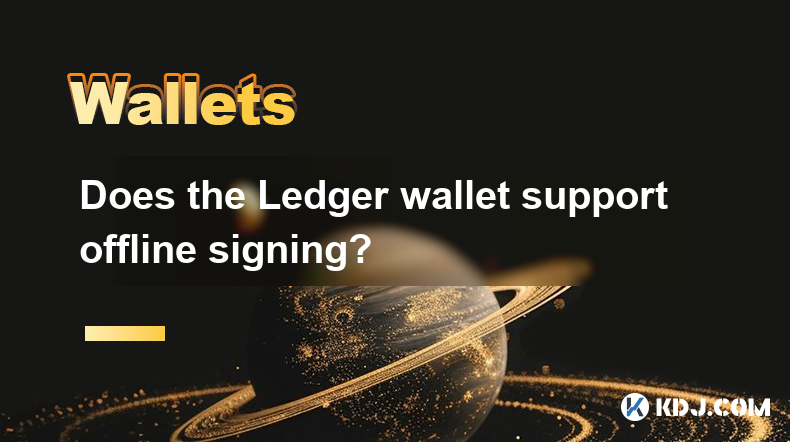
Does the Ledger wallet support offline signing?
Apr 09,2025 at 04:49am
Introduction to Ledger Wallet and Offline SigningThe Ledger wallet is a popular hardware wallet used by cryptocurrency enthusiasts to securely store their digital assets. One of the key features that users often inquire about is offline signing. Offline signing, also known as cold signing, is a security measure that allows users to sign transactions wit...
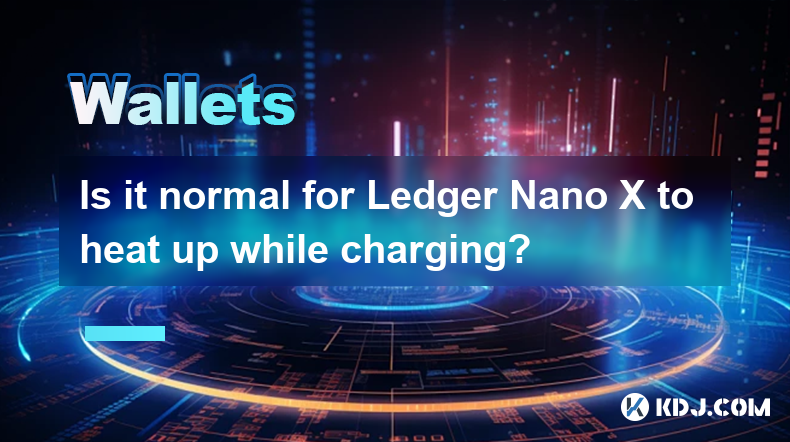
Is it normal for Ledger Nano X to heat up while charging?
Apr 09,2025 at 04:01pm
Is it normal for Ledger Nano X to heat up while charging? When using a hardware wallet like the Ledger Nano X, it's common for users to have concerns about the device's behavior, especially when it comes to heat generation during charging. This article will delve into the reasons behind the Ledger Nano X heating up while charging, whether it's normal, a...
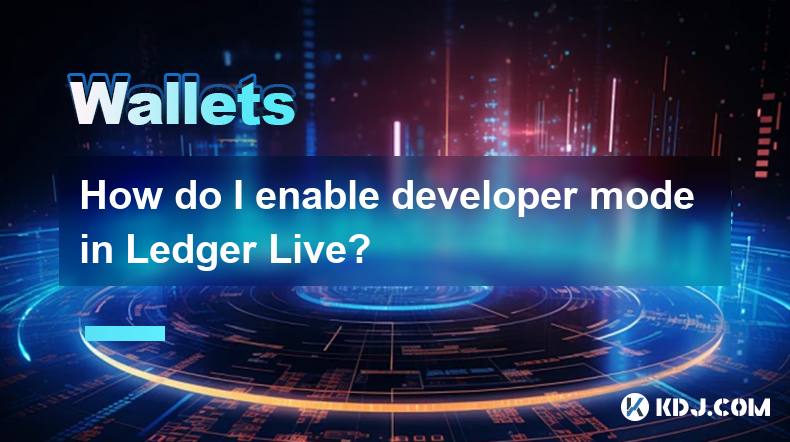
How do I enable developer mode in Ledger Live?
Apr 10,2025 at 05:49am
Enabling developer mode in Ledger Live can be a useful feature for advanced users who want to access experimental features or test new functionalities. This guide will walk you through the process of enabling developer mode in Ledger Live, ensuring you understand each step thoroughly. Understanding Developer ModeDeveloper mode in Ledger Live allows user...
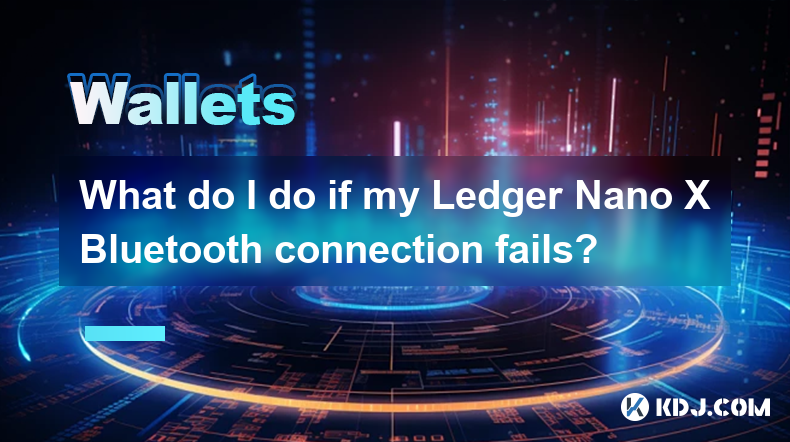
What do I do if my Ledger Nano X Bluetooth connection fails?
Apr 10,2025 at 02:28am
If your Ledger Nano X Bluetooth connection fails, there are several steps you can take to troubleshoot and resolve the issue. The Ledger Nano X is a popular hardware wallet that supports Bluetooth connectivity, allowing you to manage your cryptocurrencies conveniently from your smartphone. However, like any technology, it can encounter connectivity issu...
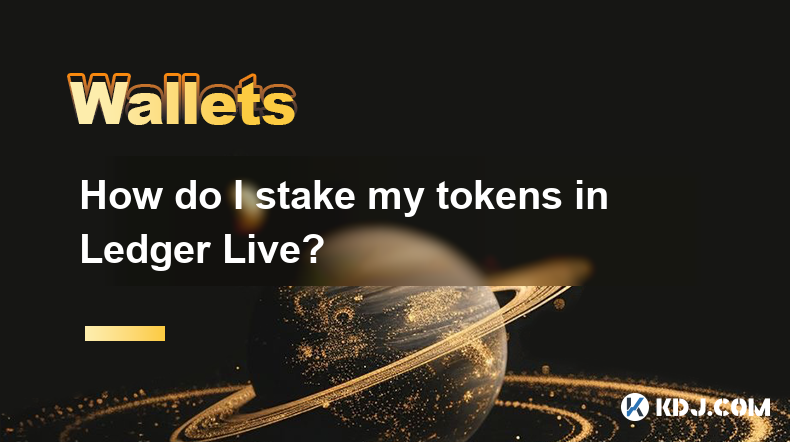
How do I stake my tokens in Ledger Live?
Apr 09,2025 at 06:00pm
Staking your tokens in Ledger Live is a straightforward process that allows you to earn rewards on your cryptocurrency holdings securely. This guide will walk you through the steps to stake your tokens using Ledger Live, ensuring you can maximize your returns while keeping your assets safe. Understanding Staking in Ledger LiveStaking is the process of h...
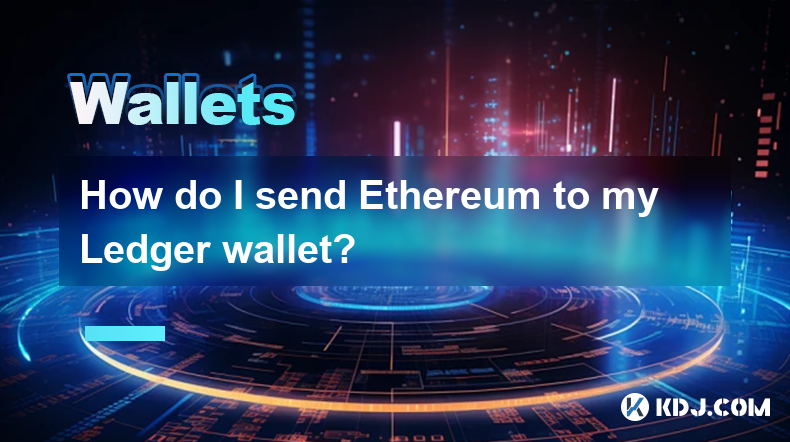
How do I send Ethereum to my Ledger wallet?
Apr 09,2025 at 03:21am
Sending Ethereum to your Ledger wallet involves a few straightforward steps, but it's crucial to follow them carefully to ensure the security of your funds. In this guide, we'll walk you through the process of transferring Ethereum to your Ledger wallet, ensuring that you understand each step and the necessary precautions. Preparing Your Ledger WalletBe...

Does the Ledger wallet support offline signing?
Apr 09,2025 at 04:49am
Introduction to Ledger Wallet and Offline SigningThe Ledger wallet is a popular hardware wallet used by cryptocurrency enthusiasts to securely store their digital assets. One of the key features that users often inquire about is offline signing. Offline signing, also known as cold signing, is a security measure that allows users to sign transactions wit...

Is it normal for Ledger Nano X to heat up while charging?
Apr 09,2025 at 04:01pm
Is it normal for Ledger Nano X to heat up while charging? When using a hardware wallet like the Ledger Nano X, it's common for users to have concerns about the device's behavior, especially when it comes to heat generation during charging. This article will delve into the reasons behind the Ledger Nano X heating up while charging, whether it's normal, a...

How do I enable developer mode in Ledger Live?
Apr 10,2025 at 05:49am
Enabling developer mode in Ledger Live can be a useful feature for advanced users who want to access experimental features or test new functionalities. This guide will walk you through the process of enabling developer mode in Ledger Live, ensuring you understand each step thoroughly. Understanding Developer ModeDeveloper mode in Ledger Live allows user...

What do I do if my Ledger Nano X Bluetooth connection fails?
Apr 10,2025 at 02:28am
If your Ledger Nano X Bluetooth connection fails, there are several steps you can take to troubleshoot and resolve the issue. The Ledger Nano X is a popular hardware wallet that supports Bluetooth connectivity, allowing you to manage your cryptocurrencies conveniently from your smartphone. However, like any technology, it can encounter connectivity issu...

How do I stake my tokens in Ledger Live?
Apr 09,2025 at 06:00pm
Staking your tokens in Ledger Live is a straightforward process that allows you to earn rewards on your cryptocurrency holdings securely. This guide will walk you through the steps to stake your tokens using Ledger Live, ensuring you can maximize your returns while keeping your assets safe. Understanding Staking in Ledger LiveStaking is the process of h...

How do I send Ethereum to my Ledger wallet?
Apr 09,2025 at 03:21am
Sending Ethereum to your Ledger wallet involves a few straightforward steps, but it's crucial to follow them carefully to ensure the security of your funds. In this guide, we'll walk you through the process of transferring Ethereum to your Ledger wallet, ensuring that you understand each step and the necessary precautions. Preparing Your Ledger WalletBe...
See all articles





















































































